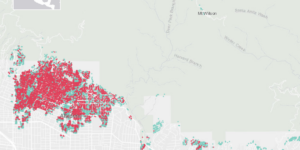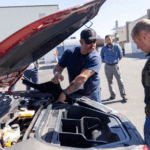How good are the social media platform’s most active users at detecting falsehoods on Twitter, especially during public emergencies?
Not good, according to new University at Buffalo research that examined more than 20,000 tweets during Hurricane Sandy and the Boston Marathon bombing.
The study, published on May 11 in the journal Natural Hazards, examined four false rumors—two each from the marathon and hurricane, including an infamous falsehood about the New York Stock Exchange flooding.
Researchers examined three types of behavior. Twitter users could either spread the false news, seek to confirm it, or cast doubt upon it. Researchers found:
- 86 to 91 percent of the users spread false news, either by retweeting or “liking” the original post.
- 5 to 9 percent sought to confirm the false news, typically by retweeting and asking if the information was correct.
- 1 to 9 percent expressed doubt, often by saying the original tweet was not accurate.
“To the best of our knowledge, this is the first study to investigate how apt Twitter users are at debunking falsehoods during disasters. Unfortunately, the results paint a less than flattering picture,” says the study’s lead author Jun Zhuang, PhD, associate professor in the Department of Industrial and Systems Engineering in UB’s School of Engineering and Applied Sciences.
Even after the false news had been debunked on Twitter and traditional news media outlets, the study found that:
- Less than 10 percent of the users who spread the false news deleted their erroneous retweet.
- Less than 20 percent of the same users clarified the false tweet with a new tweet.
“These findings are important because they show how easily people are deceived during times when they are most vulnerable and the role social media platforms play in these deceptions,” says Zhuang, who is conducting similar research concerning Hurricane Harvey and Hurricane Irma.
Additionally, Zhuang says it’s important to note that the study does not consider Twitter users who may have seen the original tweets with false news and decided to ignore them.
“It’s possible that many people saw these tweets, decided they were inaccurate and chose not to engage,” says Zhuang, who was recently awarded a $392,000 National Science Foundation (NSF) grant to work on additional studies, including understanding what factors prompt Twitter users to ignore certain posts during emergencies, and the best ways to debunk false news.
Source: University at Buffalo





















 Why All the Fuss? Fairness Regulations Meet Insurers’ Growing Use of AI
Why All the Fuss? Fairness Regulations Meet Insurers’ Growing Use of AI  Texas Lawsuit Alleges Allstate Illegally Collects Driver Data
Texas Lawsuit Alleges Allstate Illegally Collects Driver Data  Idaho Lab Trains Firefighters on EV Battery Safety
Idaho Lab Trains Firefighters on EV Battery Safety  Business Groups, Trial Lawyers at Odds Over Georgia’s Latest Push to Curb Lawsuits
Business Groups, Trial Lawyers at Odds Over Georgia’s Latest Push to Curb Lawsuits 






